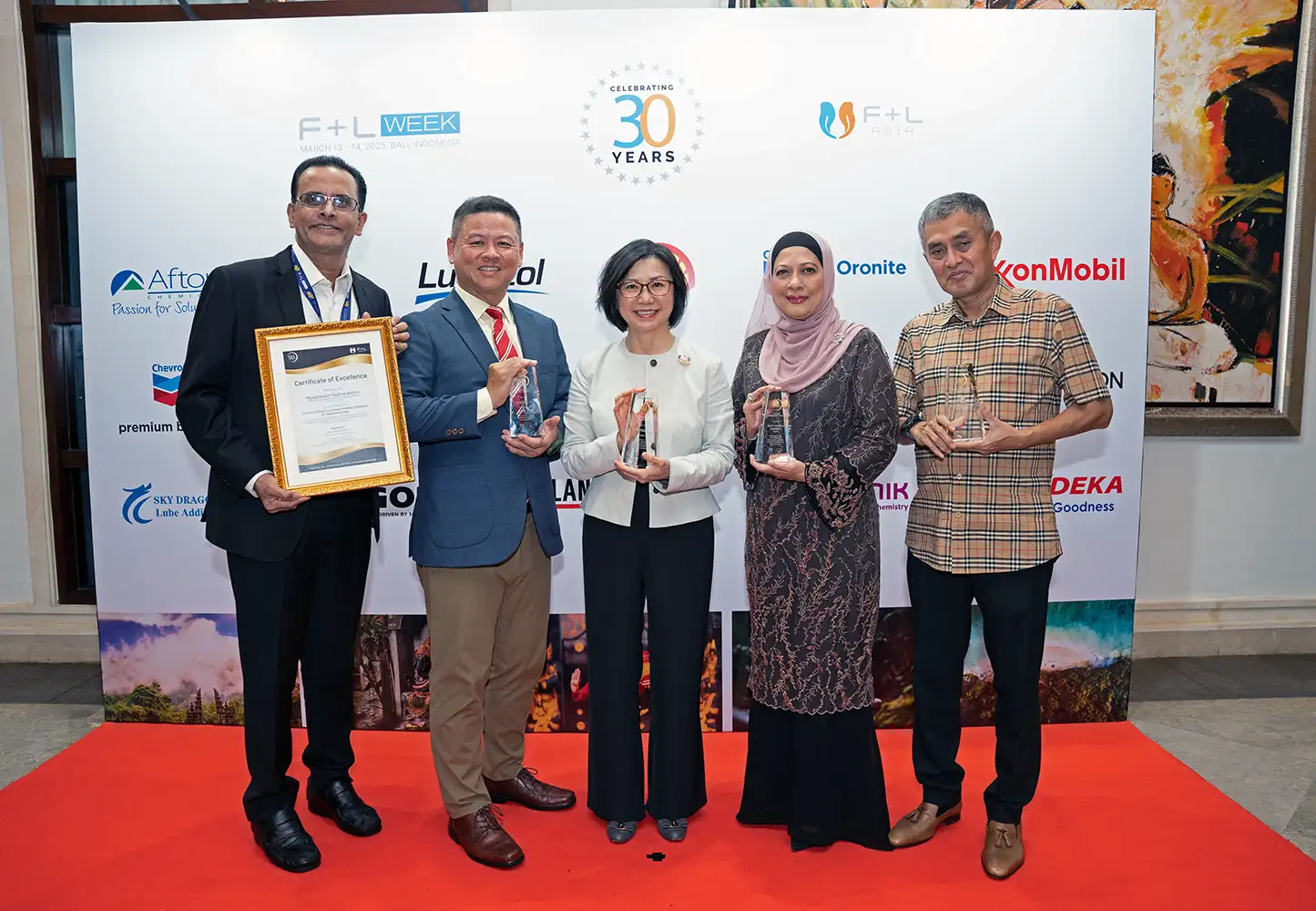
CEO strategies driving Asia’s economic transformation
Asia is entering a transformative phase that is poised to reshape the global economic landscape. According to the February 2025 McKinsey report, “CEO imperatives in Asia’s new era,” authored by Gautam Kumra, Semyon Yakovlev, Anushree Awasthee, Darshit Mehta, and Shannon Wong, the region is expected to contribute 42% of global GDP by 2040, be home to 60% of Fortune Global 500 companies, and hold 55% of the world’s total workforce.
This immense growth potential brings both unprecedented opportunities and complex challenges for business leaders. CEOs in Asia must now take decisive action to steer their organisations through this era of transformation. The McKinsey report outlines four key imperatives that will define business leadership in Asia over the next two decades: becoming global players, increasing domestic capital effectiveness, leading in artificial intelligence (AI), and engaging a new generation of digitally empowered youth.
Becoming global leaders: Rethinking strategy for scale and resilience
Asian firms are no longer content with regional dominance—they are increasingly asserting themselves as global powerhouses. From semiconductors to clean energy and digital services, companies like South Korea’s SK hynix, Taiwan Semiconductor Manufacturing Company, Singapore’s DBS Bank, and Japan’s Rakuten are reshaping entire industries.
McKinsey analysis suggests that if current growth trajectories continue, 80 to 100 more Asian companies could join the Fortune Global 500 by 2040. But to achieve and sustain such global influence, CEOs must embrace strategic focus and scenario planning. Leaders are advised to make focused bets on core technologies, simplify their portfolios, and develop research hubs in innovation-heavy cities such as Bengaluru and Shenzhen.
Robust scenario planning has become non-negotiable in today’s volatile environment. CEOs must consider “black swan” events (rare but disruptive), “grey rhinos” (highly probable but ignored risks), and “silver linings” (opportunities arising from uncertainty). For instance, a consumer goods company may need to secure alternate suppliers in response to a geopolitical shock or fast-track product launches when demand spikes unexpectedly.
Mobilising capital: Reducing reliance on foreign investment
Asia is moving from a heavy dependence on foreign direct investment (FDI) to a new model of domestic capital mobilisation. The region’s investment growth is staggering—fixed investments could surpass USD 140 trillion by 2040, dwarfing projections for the U.S. and EU combined. China alone registered USD 7 trillion in fixed-asset investments in 2023, while India channelled USD 800 billion into infrastructure over the last five years.
Despite the scale, many Asian companies are not yet seeing optimal returns. The average return on invested capital (ROIC) for Asia’s top 1,000 companies stands at just 9%, significantly lower than the global average of 20% outside Asia.
To remedy this, CEOs are encouraged to realign their financial strategies by strengthening ties with local and regional investors, simplifying business models, and embracing financial discipline. A strategic shift away from complex conglomerate structures towards specialised, high-return portfolios could unlock hidden value and enhance transparency.
Establishing dedicated investment arms—such as corporate venture capital funds—can help companies deploy capital into high-growth sectors like renewable energy and logistics automation. These investments, aligned with Asia’s megatrends, offer not just economic returns but also a competitive edge.
Leading in AI: Becoming global pioneers in innovation
Asia is rapidly becoming a global standard-setter in AI, with the region accounting for 80% of AI and generative AI patents worldwide. Investment is surging, projected to reach USD 110 billion by 2028, with compound annual growth rates of 24% between 2023 and 2028.
Several Asian enterprises are already demonstrating how AI can revolutionise operations. India’s Flipkart is transforming e-commerce with AI-based inventory and multilingual chatbots. South Korea’s Coupang leverages AI for demand forecasting, enabling faster deliveries and leaner inventory. Singapore’s DBS Bank has deployed AI across operations, leading to a 50% reduction in its cost-income ratio for digital customers compared to traditional ones.
McKinsey advises CEOs to move beyond experimental use of AI and reimagine operations with AI at the core. This means using predictive analytics for manufacturing quality control, AI-driven pricing models in retail, and personalised digital experiences for consumers. Businesses should also foster a culture of innovation and continuous learning, investing in capability-building across analytics, machine learning, and user-centric design.
Developing internal talent is key. Partnerships with universities and edtech platforms can provide employees with immersive training, while creating a culture of digital agility ensures long-term resilience and operational excellence.
Tapping into the youth dividend: Engaging the digital generation
Asia’s young population is a powerful driver of economic transformation. By 2040, the region will be home to more than half of the world’s youth aged 18 to 24 and approximately 55% of the global workforce. Governments are ramping up investment in digital infrastructure and education, while consumer preferences are shifting rapidly toward digital-first lifestyles.
By 2030, Asia is expected to account for 65% of the global middle class. This consumer base is not only growing in size but is also digitally savvy and increasingly affluent. To capture this market, companies must build hyperpersonalised experiences that resonate with young consumers’ values and lifestyles.
Brands like Indonesia’s Telkomsel are already innovating. Its mobile platform by.U allows customers to manage their services entirely online, offering convenience and engagement tailored to Gen Z preferences.
To connect with this demographic, CEOs must rethink their channels and engagement strategies. Moving beyond traditional retail, companies should build direct-to-consumer models, gamify product experiences, and create vibrant communities through social media and live-streaming events. In parallel, they must collaborate with governments and educational institutions to nurture a workforce that is future-ready and technology-literate.
The path forward: Seizing Asia’s defining moment
The McKinsey report makes a compelling case: Asia is not merely participating in global trends—it is defining them. For CEOs, the path forward requires a recalibration of strategies, investments, and leadership models. Leaders must think bigger, act bolder, and move faster to remain competitive in this fast-evolving landscape.
The imperatives outlined—global ambition, capital effectiveness, technological leadership, and youth engagement—are not isolated strategies. They form a cohesive vision for sustainable, inclusive growth. The next generation of global business champions is likely to emerge from Asia—and CEOs who embrace this moment with clarity and courage will shape not just the future of their companies, but of the region itself.

As Asia steps boldly into a new era of influence, F+L Week 2025 offered a timely platform to reflect on the region’s progress and potential. Celebrating 30 years of thought leadership in fuels and lubricants, the event underscored the vitality and ingenuity driving Asia’s rise. One of the most poignant moments was the recognition of three outstanding industry leaders whose work has exemplified the very imperatives outlined in McKinsey’s report. Dr. Ping Zhu, vice president of Additives Global Transformation, of Lubrizol Corp., Eugene Ng, general manager of Sales & Marketing, Asia-Pacific, of Chevron Oronite, and Dato Hazimah Zainuddin, founder and group executive chairman, of Hyrax Oil were each honoured with the F&L Asia Person of the Year and Lifetime Achievement Awards, respectively—a testament to their long-standing contributions to innovation, sustainability, and regional leadership. Their achievements serve as a powerful reminder that Asia’s ascent is powered not just by market dynamics and demographic trends, but by visionary and dedicated individuals committed to shaping a smarter, more sustainable future for the industry.
Events like F+L Week remain essential in cultivating a collaborative spirit across the lubricants and fuels value chain. They provide an inclusive platform to encourage open dialogue, spark innovation, and build partnerships that transcend borders. As the industry continues to evolve, such gatherings will play an increasingly critical role in guiding the sector towards a more sustainable, tech-enabled, and interconnected future.








